Introduction to the Scale Dimension (S-Dimension)
In the Middle Ages, man perceived himself as the center of the universe (Fig. 1), since, according to the Bible, God created the whole world for man's sake and for his benefit.
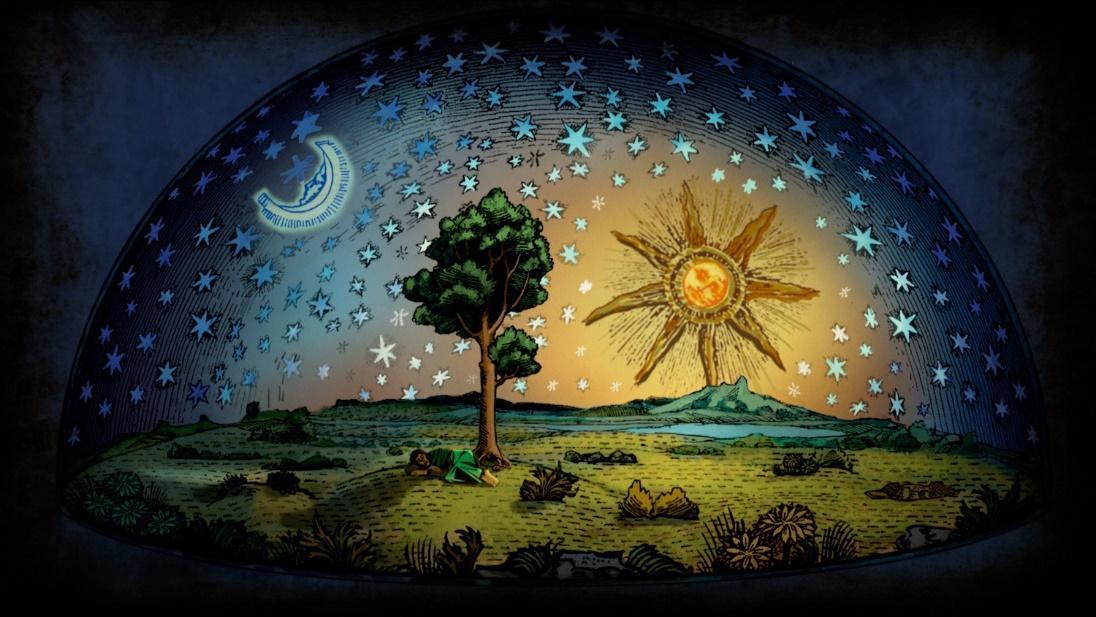 Fig. 1. Medieval idea of the Universe - flat earth and spherical starry dome above it
Fig. 1. Medieval idea of the Universe - flat earth and spherical starry dome above it
However, since the XVI century, thanks to the invention of the telescope, it became obvious that it is the Earth that revolves around the Sun, and not all planets and luminaries revolve around the Earth. And the medieval model of the "cozy cosmos" gradually began to collapse, and the stellar abyss opened before man (Fig. 2).
 Fig. 2. When telescopes were opened, it became clear to everyone that there was no star dome but an infinite abyss of stellar space.
Fig. 2. When telescopes were opened, it became clear to everyone that there was no star dome but an infinite abyss of stellar space.
Since the sixteenth century, as telescopes were improved, astronomers have pushed the horizons of perception of the visible cosmos further and further. The human eye can distinguish only a thousand stars in the sky, but now more than a billion have been described and cataloged. But they are much more, because only in our Galaxy there are about 10 billion stars, and there are already more than 10 billion such galaxies in the Universe.
In addition to the growth of the number of stars and galaxies, the size of the visible world gradually grew. From planetary orbits and the scale of the Solar System (\(10^{15}\) cm) to the size of our Galaxy (\(10^{23}\) cm), from the size of our Galaxy to the size of the entire Metagalaxy (\(10^{28}\) cm). And gradually (but very rapidly by historical standards) man in self-perception moved from the center of the Universe to the backyard of the Universe (Fig. 3).
 Fig. 3. Comparison of the scale of the Solar System with different systems in the Galaxy and Metagalaxy. Author Andrew Z. Colvin
Fig. 3. Comparison of the scale of the Solar System with different systems in the Galaxy and Metagalaxy. Author Andrew Z. Colvin
The visible world of the cosmos has expanded to an incredible size, which must be overcome even at the speed of light in a time of more than 10 million years. And the human scale relative to the Metagalaxy turned out to be 26 orders of magnitude smaller, i.e. a billion billion billion people smaller than the visible Universe.
Nothing was left of the cozy medieval biblical picture. This caused the entire educated humanity a worldview shock, which was noted by V.I. Vernadsky:
While enlarging the world to extraordinary proportions, the new scientific worldview at the same time relegated man with all his interests and achievements - relegated all the phenomena of life - to the position of an insignificant detail in the cosmos.
and P. Davis:
Humanity has never fully recovered from the intellectual shock of losing its privileges on Earth.
The position of "an insignificant detail on the backside of the universe" humiliates our self-awareness, rooted in the biblical myth of human exceptionalism. After all, for thousands of years man has been convinced that all these stars and the Earth were created by God for him and for his benefit.
However, mankind will never be able to return to the "children's room" under the starry dome to its "sandboxes" and "dolls." Mankind has learned the true scale of the Universe and it is necessary either to come to terms with its "insignificant position in the cosmos" or to find a new meaning in these vast spaces and a new place for itself and all living things in the Universe.
Paradoxically, it was the accumulation of data on the large size of the Universe and the depths of matter that led at the end of the twentieth century to the discovery of an incredible fact that returns life, but now on a modern scientific basis, to the center of the universe forever.
But before we show this, consider the movement of cognition into the realm of the microcosm.
The invention of the telescope coincided with the invention of the microscope. And as the horizons of cognition expanded, mankind also moved in the opposite direction to the area of ever smaller sizes. First it was possible to see cells, then molecules, then atoms, and finally their nuclei and elementary particles. To date, the smallest particles visible in the instruments are protons and neutrons with sizes of \( 10^{-13}\) cm.
Further instrumental progress, however, for a long time stalled, because even at the Large Hadron Collider has not yet been able to look inside the protons and see their hypothetical quarks.
Despite the "instrumental deadlock”, theoretical physics managed to look 20 orders of magnitude deeper than the proton scale. In the 1900s Max Planck demonstrated to the scientific community his calculations of the so-called fundamental length (\( 10^{-13}\) cm) and proved that it is not possible to look deeper than this size at all because the uncertainty principle does not allow it. This size (its more precise value is \(1.6\times10^{-13}\) cm) has since been called Planck's fundamental length in honor of its discoverer.
To place all particles, objects, and systems from atomic nuclei to the Metagalaxy studied by science on one diagram, we can use the scale of decimal logarithms (Fig. 4), which we will further abbreviate as the S-axis, and the whole interval from -33 to +28 as the S-interval.
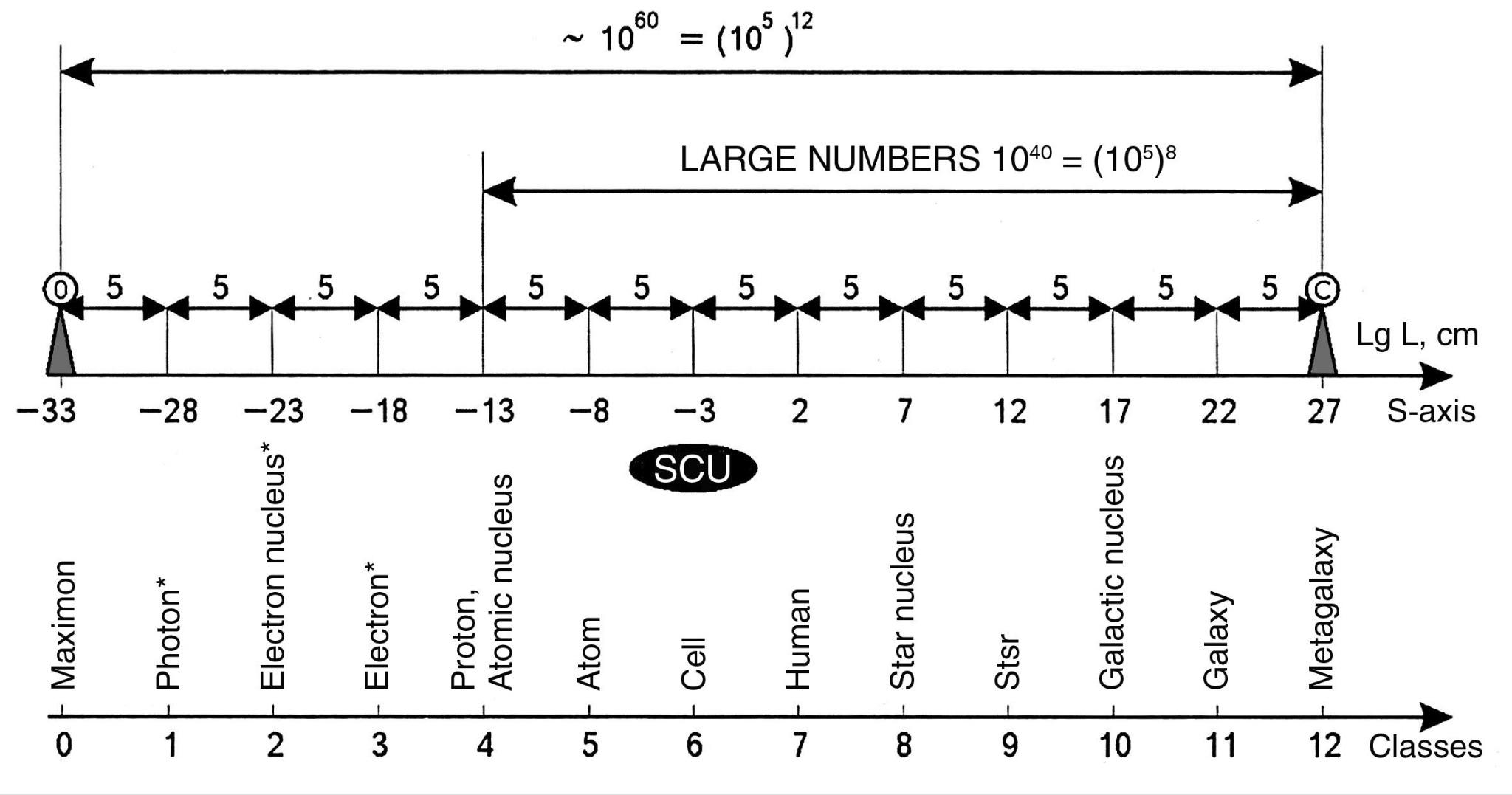 Fig. 4. The range of sizes of objects known to science on the scale of decimal logarithms for our Universe ranges from the fundamental Planck length of -33 (\( 10^{-13}\) cm) to the Metagalaxy of +28 (\(10^{28}\) cm)
Fig. 4. The range of sizes of objects known to science on the scale of decimal logarithms for our Universe ranges from the fundamental Planck length of -33 (\( 10^{-13}\) cm) to the Metagalaxy of +28 (\(10^{28}\) cm)
Thus, everything that modern science can study in the Universe is contained within the dimensional range on the decimal logarithm axis from the fundamental Planck length (-33) to the Metagalaxy itself (+28). The total length of this logarithmic interval is exactly 61 orders of magnitude.
On this scale (see Fig. 4) to the left in the range from -33 to -13 is the sub-microcosm region, which is completely unexplored experimentally, so physicists call it Dirac's basement. And it stretches from the Planck length (-33) to the size of atomic nuclei (-13) by 20 orders of magnitude. And to the right of the "Dirac basement," with a step of 5 orders of magnitude are placed nucleons, atoms, cells, man, nuclei of stars, stars, nuclei of galaxies and galaxies themselves. This series of significant objects of our Universe is closed by the Metagalaxy proper - the visible part of the Universe, which consists of billions of galaxies forming the so-called "foam structure,” by the way, very similar to the neural network of the brain (Fig. 5).
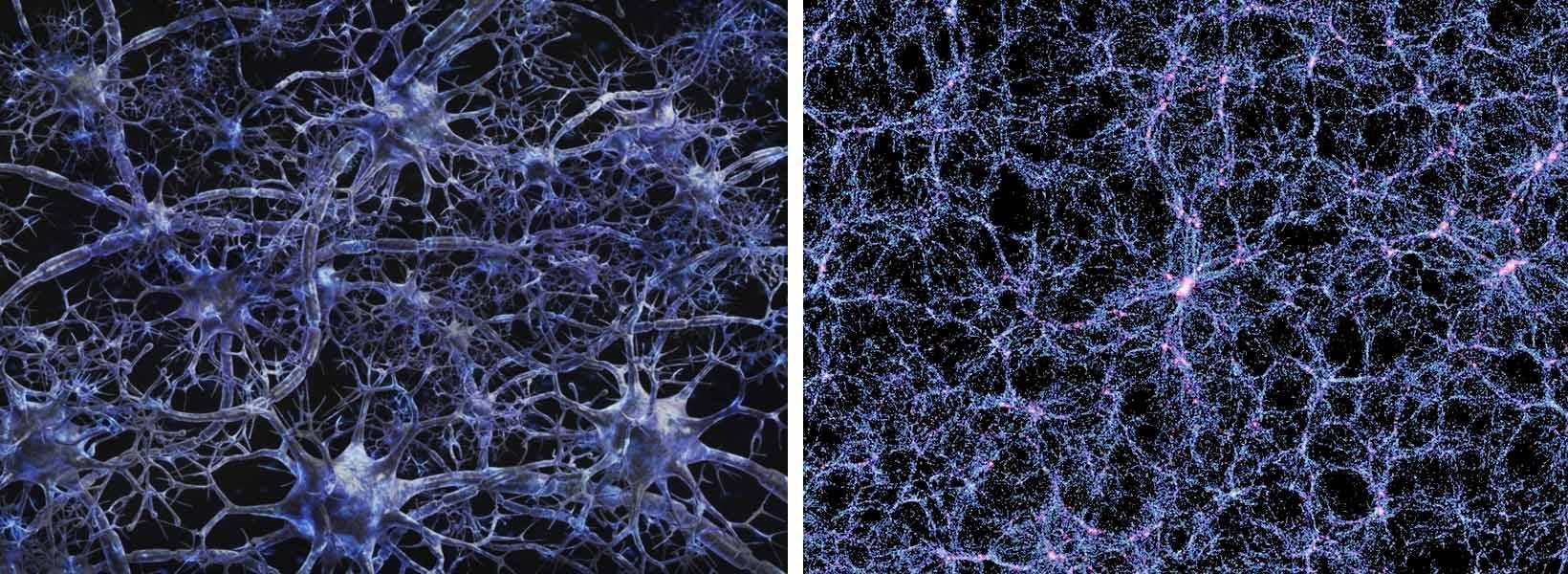 Fig. 5. Foam structure of the Metagalaxy (right), which is very similar in its structure to the neural structure of the brain (left)
Fig. 5. Foam structure of the Metagalaxy (right), which is very similar in its structure to the neural structure of the brain (left)
And as studies have shown, all the most significant objects of the Universe are located on the logarithmic axis (S-axis) of the sizes of this interval from the proton diameter to the metagalaxy itself strictly periodically with a step of 5 orders of magnitude (Fig. 6).
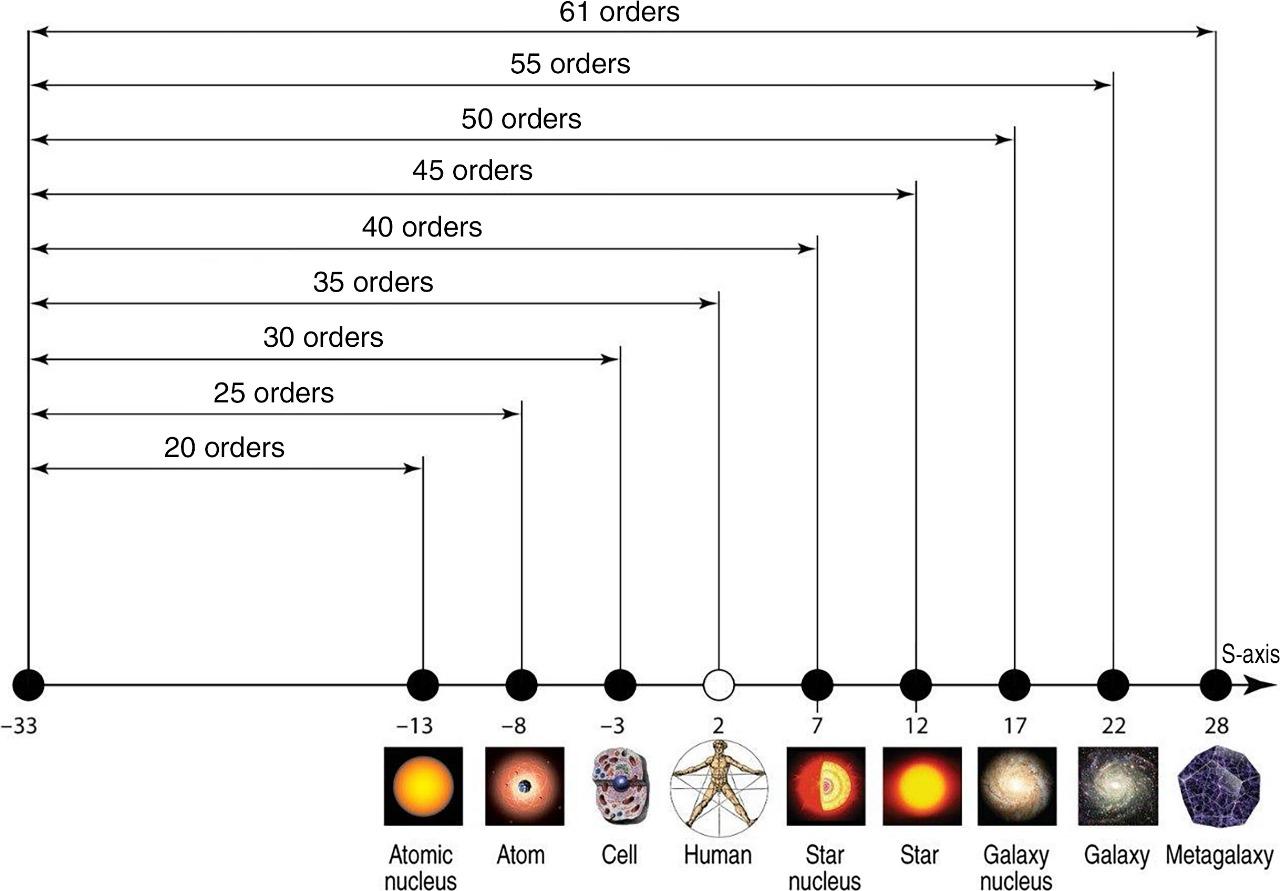 Fig. 6. All key elements, objects and systems of our Universe are located on the S-axis strictly through 5 orders of magnitude
Fig. 6. All key elements, objects and systems of our Universe are located on the S-axis strictly through 5 orders of magnitude
The nature of this periodicity and many of its consequences are the subject of this book.
Taking into account the fact that naturally the human eye does not see objects smaller than a speck of dust (\( 10^{-3}\) cm), and real distances (not counting the mythological "dome of the sky") for our vision are limited to a hundred kilometers (this is how far a person can see from the top of a mountain, because the "horizon line" hides more distances for us), then before the appearance of the microscope and telescope a person could see and study on the Earth about 5 orders up and down from his scales on the S-axis (Fig. 7). And for many centuries and millennia, the "dimensional corridor of perception" for man was limited to 10 orders of magnitude on the logarithmic axis - +5 from man's sizes upwards and -5 from man's sizes downwards. And only for a negligible by historical standards period of several decades in the beginning of the twentieth century, these 10 orders of perception on the dimensional axis turned into 61 orders.
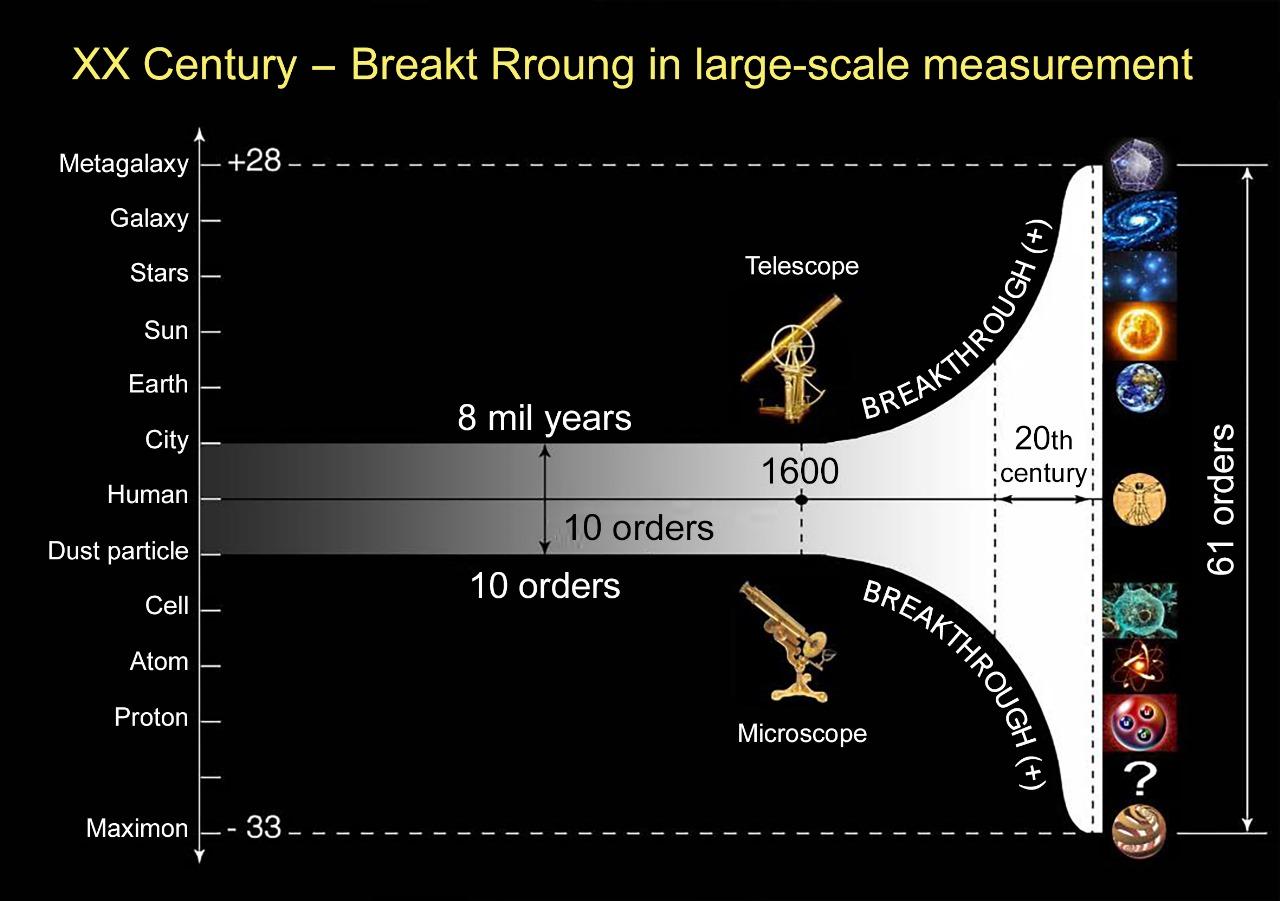 Fig. 7. Almost all of the history of mankind, have seen no smaller than a speck of dust and no further than the horizon from the top of a mountain - i.e. 10 orders of magnitude on the S-axis. Only the invention of the microscope and telescope gradually began to expand the scale boundaries of cognition. A sharp breakthrough occurred at the turn of the 19th and 20th centuries, when the S-range of perception expanded from 10 orders of magnitude to 61 orders of magnitude.
Fig. 7. Almost all of the history of mankind, have seen no smaller than a speck of dust and no further than the horizon from the top of a mountain - i.e. 10 orders of magnitude on the S-axis. Only the invention of the microscope and telescope gradually began to expand the scale boundaries of cognition. A sharp breakthrough occurred at the turn of the 19th and 20th centuries, when the S-range of perception expanded from 10 orders of magnitude to 61 orders of magnitude.
It can be allegorically described as follows - the dimensional curtains of horizons opened and a completely different world of dimensional depths and heights of the Universe collapsed on the collective consciousness of mankind. After that, mankind found itself in a completely different reality and until now (although more than a hundred years have passed), it has not yet had time to comprehend all these depths and heights of our world. And this reality is so unusual and mysterious that it will take decades, maybe even centuries, before the collective human mind will comprehend it. But this reality, besides the alleged humiliation of our self-consciousness, has brought to mankind all the benefits of modern civilization (Fig. 8), which have poured out of the horn of plenty on mankind in the last century from the depths of the microcosm (up to nuclear energy) and from the heights of outer space (e.g., satellite communications).
THE THREEFOLD FRACTALITY OF THE UNIVERSE
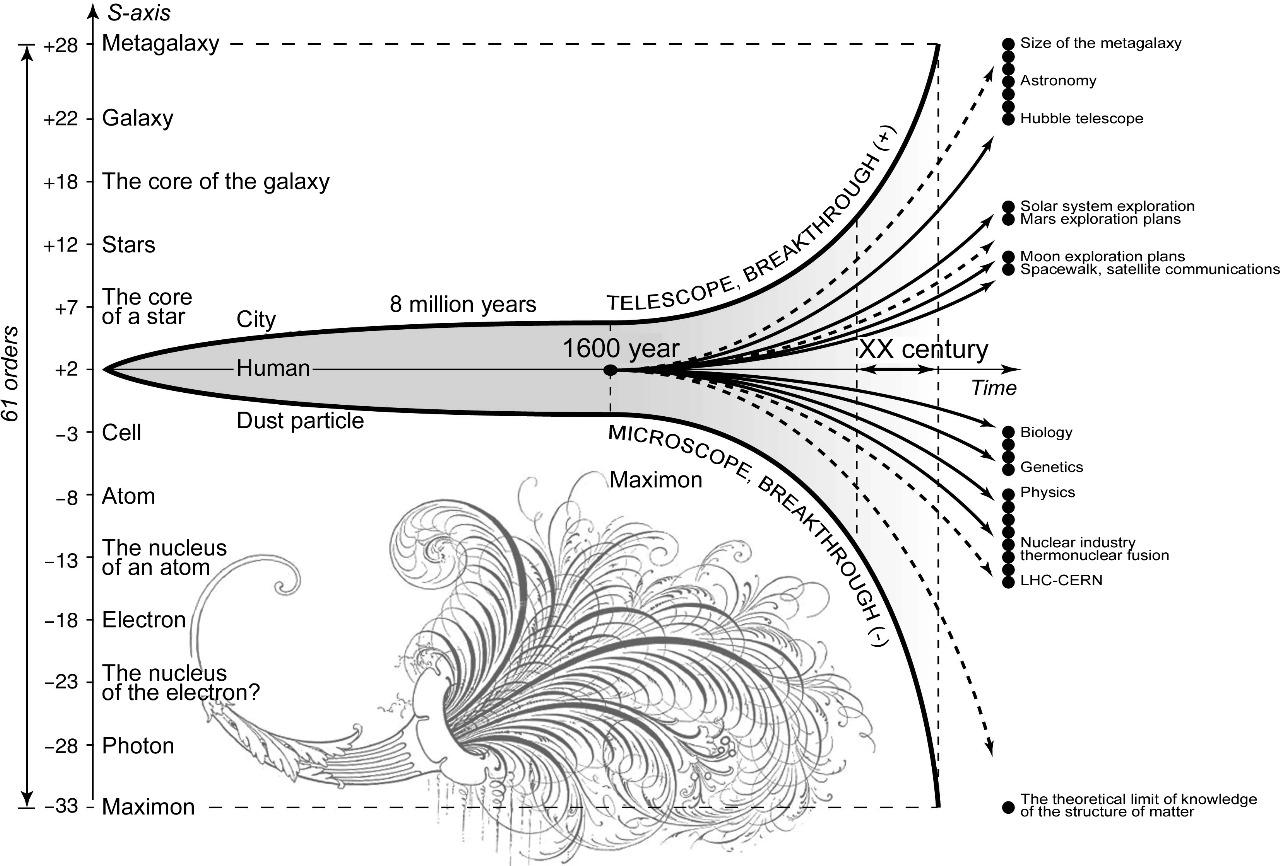 Fig. 8. "Horn of technological abundance,” which is based on the use of the structures of the microcosm and the grandiose spaces of the cosmos.
Fig. 8. "Horn of technological abundance,” which is based on the use of the structures of the microcosm and the grandiose spaces of the cosmos.
Studies of the regularities of this new reality, begun by the author in the 1970s, were reflected in numerous articles and in the final book, which is presented here for the reader's judgment. The results of the studies of these parametric depths and heights turned out to be so unusual and surprising that they attracted the attention of journalists and scientists, up to academicians of the USSR Academy of Sciences, which made it possible, immediately after these results were made public at the All-Union School-Seminar on Classification Theory in Bork (October 1979), to publish them in the leading popular journals of the USSR, such as "Znanie sila", "Nauka i zhizn", "Khimiya i zhizn", "Tehnika-molodezhi"... as well as in the collections of the Moscow State University and in the reports of the USSR Academy of Sciences.
The main result of this study was the discovery of wave periodicity along the S-axis (Fig. 9).
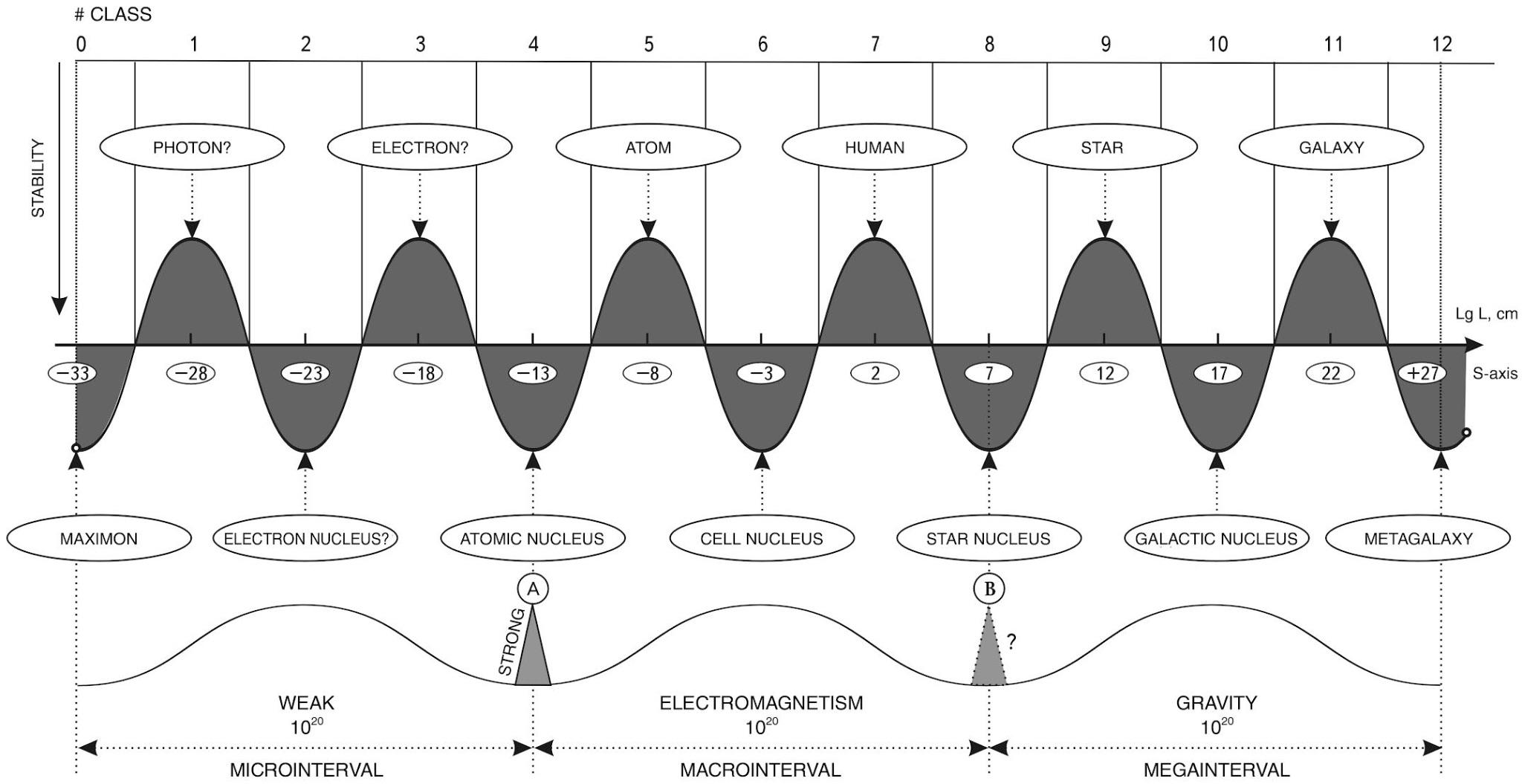 Fig.9. Scale periodicity with a step of 5 orders of magnitude can be represented as a "scale wave" with a period of 10 orders of magnitude. At the top are objects and structures at the bottom are their nuclei.
Fig.9. Scale periodicity with a step of 5 orders of magnitude can be represented as a "scale wave" with a period of 10 orders of magnitude. At the top are objects and structures at the bottom are their nuclei.
Another undoubtedly valuable discovery was the undeniable fact that the average size of a living cell of 50 microns is exactly at the proportional center of the Universe, which moves biological life from a planetary, terrestrial phenomenon to a universal one. A living cell is as many times larger than a maximon as it is smaller than the Metagalaxy (Fig. 10).
 Fig. 10. A living cell is as many times larger than the smallest particle in the Universe, the maximon, as it
Fig. 10. A living cell is as many times larger than the smallest particle in the Universe, the maximon, as it
Is smaller than the entire Metagalaxy.
The new regularities of nature when considering the properties of the Universe along its S-axis are not exhausted by the periodicity and the central position of the living cell on the S-interval of our Universe.
In the 60s, of the twentieth century, Soviet academician M.A. Markov put forward a beautiful theory according to which our space consists of fundamental particles with sizes \(10^{-13}\) cm, which he named maximon in honor of Max Planck. Physicists accepted this theory, and since then these fundamental particles - maximon - appear in all reference books.
M.A. Markov went further and based on GR proved that inside such particles there can be a whole Universe with its galaxies and possibly inhabitants, and our Universe, having sizes \(10^{28}\) cm, can be one of the fundamental particles of the higher world Meta-Universe.
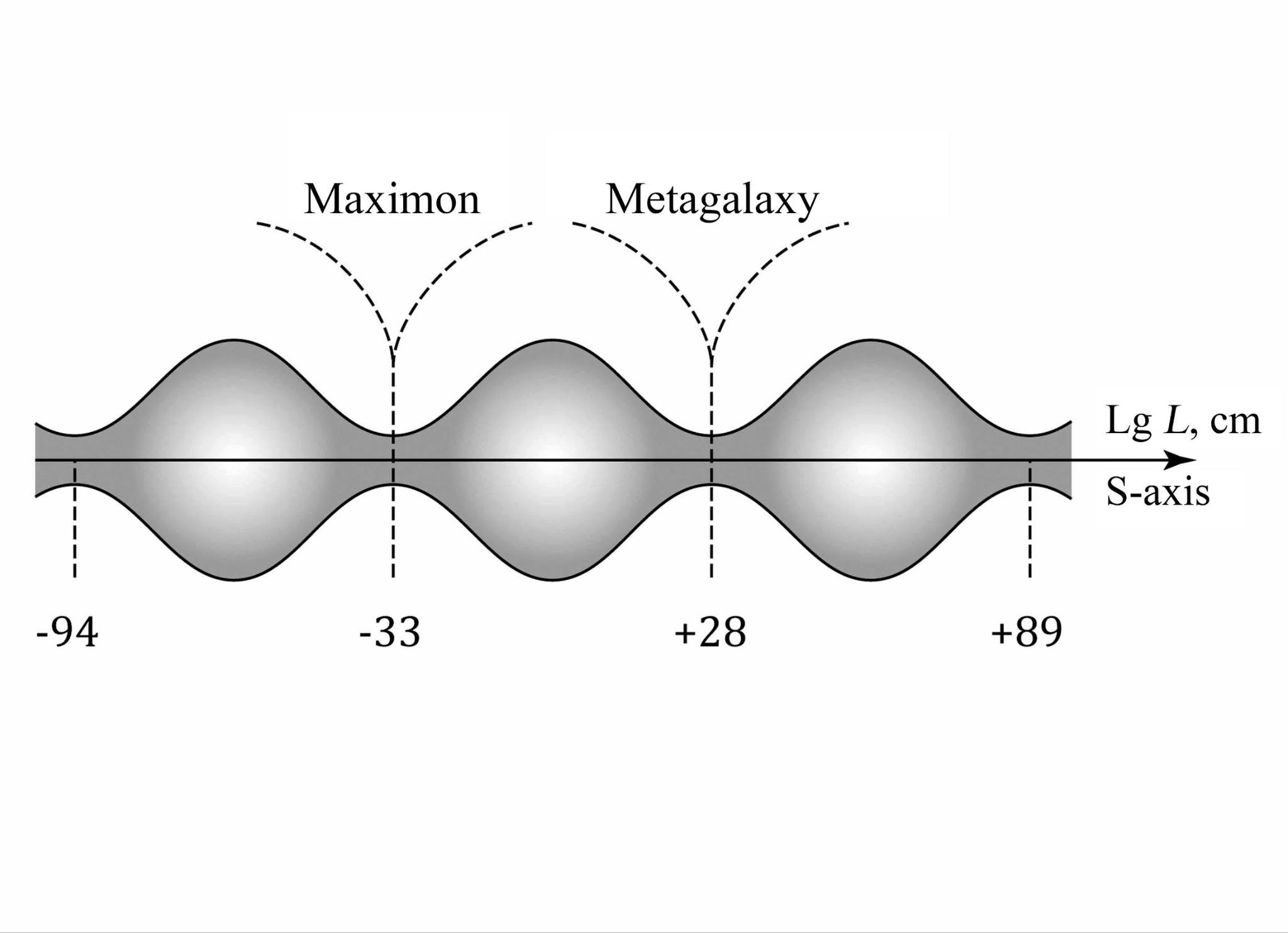 Fig. 11. The scale-cyclic model of the world according to M.A. Markov. According to this model, our Universe is just one link in a long (possibly infinite) scale chain of universes.
Fig. 11. The scale-cyclic model of the world according to M.A. Markov. According to this model, our Universe is just one link in a long (possibly infinite) scale chain of universes.
Since maximons can be lower-level universes, this makes the large Universe globally fractal at the level of "ordinary" universes. Moreover, it seems that our Universe can be self-similar and fractal within its size range as well (Fig. 12)
 Fig. 12. Self-similar "fractality" of the structures of our Universe
Fig. 12. Self-similar "fractality" of the structures of our Universe
So, if we stay within the dimensional limits of "our Universe,” then on the logarithmic axis it extends from -33 (Maximons) to +28 (Metagalaxy) by 61 orders of magnitude. And all these layers deep into matter and upward (into the heavens) were discovered and studied very quickly in a record time period from the late 19th century to the 1930s, when the true size of the Metagalaxy became clear.
Studies of the distribution of masses, symmetry, characteristic times, and other properties of objects along the axis of logarithms (S-axis) of the sizes of our Universe from the maximon to the Metagalaxy have shown that this size interval of 61 orders of magnitude is not just a mathematical abstraction, adopted for convenience of arrangement on one graph of all objects of the Universe, but a separate physical and spatial dimension of the Universe (the book is just devoted to the proof of this statement). And the author came to the conclusion that he discovered a previously unknown to science dimension of the Universe, which can be considered truly the fourth (then time can be conventionally considered the fifth dimension). In order not to be confused with time, the author decided to call it a "scale dimension", although this term has a somewhat different meaning in the traditional sense. Here a dilemma arose. Either to come up with a completely different term for the new regularity of the Universe (this was the path followed by physicists, who called parts of the proton quarks - a fantastic term that had no scientific meaning before) or to tie this phenomenon to the closest concept to it. The author chose the second. And although the concept of scale (or Large-scale) traditionally carries a different semantic load - not physical, but mathematical, the author still settled on this option. And to avoid unnecessary mathematical associations in the future, the reader used a terminological technique, which at the same time left the connection to scale but carried some specific novelty. The author suggests that all properties of the new dimension, such as symmetry, periodicity, harmony, order, etc., should be accompanied by the prefix S-... For example, S-symmetry, S-axis, S-harmony.....
But moreover, some data on characteristic times (they are given in the book) suggest that the regularity discovered by the author has a wider character than just an additional spatial dimension. The S-dimension is most likely the main dimension of the Universe, which reflects the properties of both space (sizes and shapes) and time (periods and duration of existence). Thus S-dimension, from the author's point of view, is complex, synergetic, and its projections on statics, dynamics, etc, various forms of matter are perceived by us as spatial and temporal dimensions.
In conclusion, we would like to note that this study is aimed primarily at expanding the worldview horizons of our existence. Practical results of studying S-dimension should be expected only later; they will come as this new parameter for mankind is mastered. To such consequences the author considers, among other things, mastering of etheric energy, the problems of mastering of which lie, in the author's opinion, in misunderstanding of the connection between the structure of the maximon medium (matter) and material formations(from nucleons to stars).
What is philosophically very important about the fact that we are exploring the S-dimension with the thoroughness that modern science is capable of First of all, it is to rethink the place in the Universe of man and all biological life.
Above we mentioned the medieval worldview in which man, according to biblical texts, was at the center of the universe. After the Middle Ages, as our knowledge of the cosmic spaces expanded, science practically "threw" man from his privileged position to the periphery of the Universe, which gave rise to a global worldview of despondency.
However, immersion in the laws of the Universe related to the S-dimension paradoxically leads us to the opposite high state of mind and thought. Analyzing the structure of the S-dimension and the place of life in it leads us to a fundamental conclusion - we are not accidental in the Universe; we live all its life and every second perceive information and impulses to development from it.
The discovery of a new dimension of the Universe has led to the conclusion that life in its main form - in the form of a cell - is exactly in the focus of all information processes of the Universe. Let us remember that we all start from this very point on the S-axis, from a fertilized sex cell - zygote. Moreover, further calculations have shown that besides zygote exactly in the center of the S-space of the Universe, there is another much more interesting formation - the world memory grain (WMG), so that the zygote is just an "operational genetic memory" of a more fundamental phenomenon of the Universe, figuratively speaking - the tip of the iceberg of the world spirit grain, the world atman (Fig. 13).
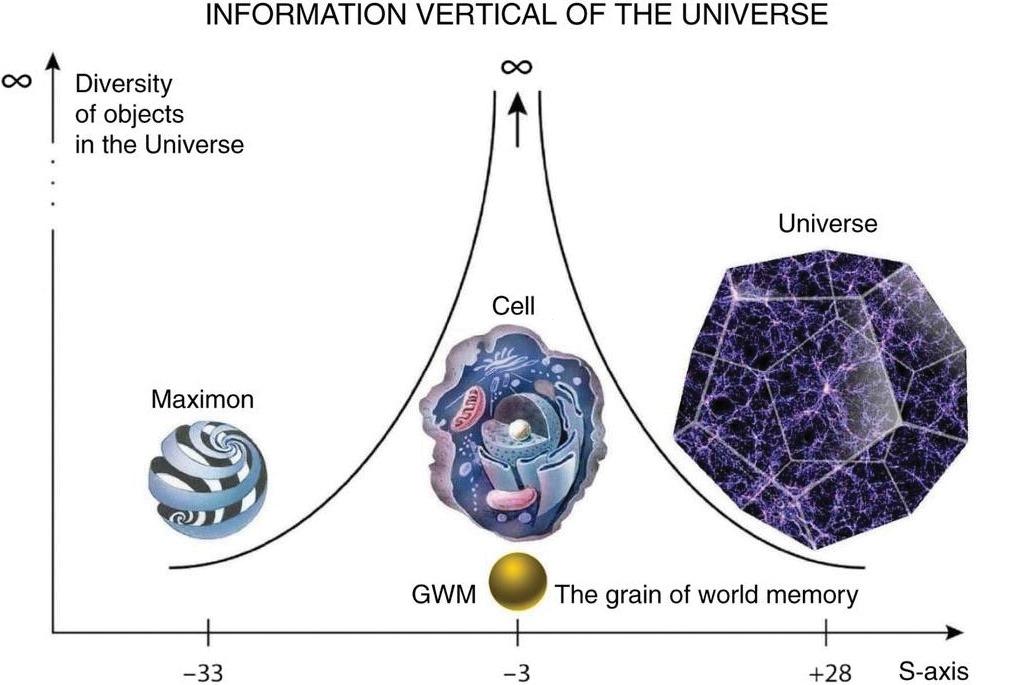
Fig. 13. In the large-scale center of the Universe there is not only a living cell, but also a "grain of the world memory", which has an almost infinite memory that allows a person incarnating anew each time to use all the experience accumulated in previous incarnations
And man himself with his average height of 162 cm (+2 on the S-axis) in the S-dimension of life on the planet is exactly in its S-center (Fig. 14).
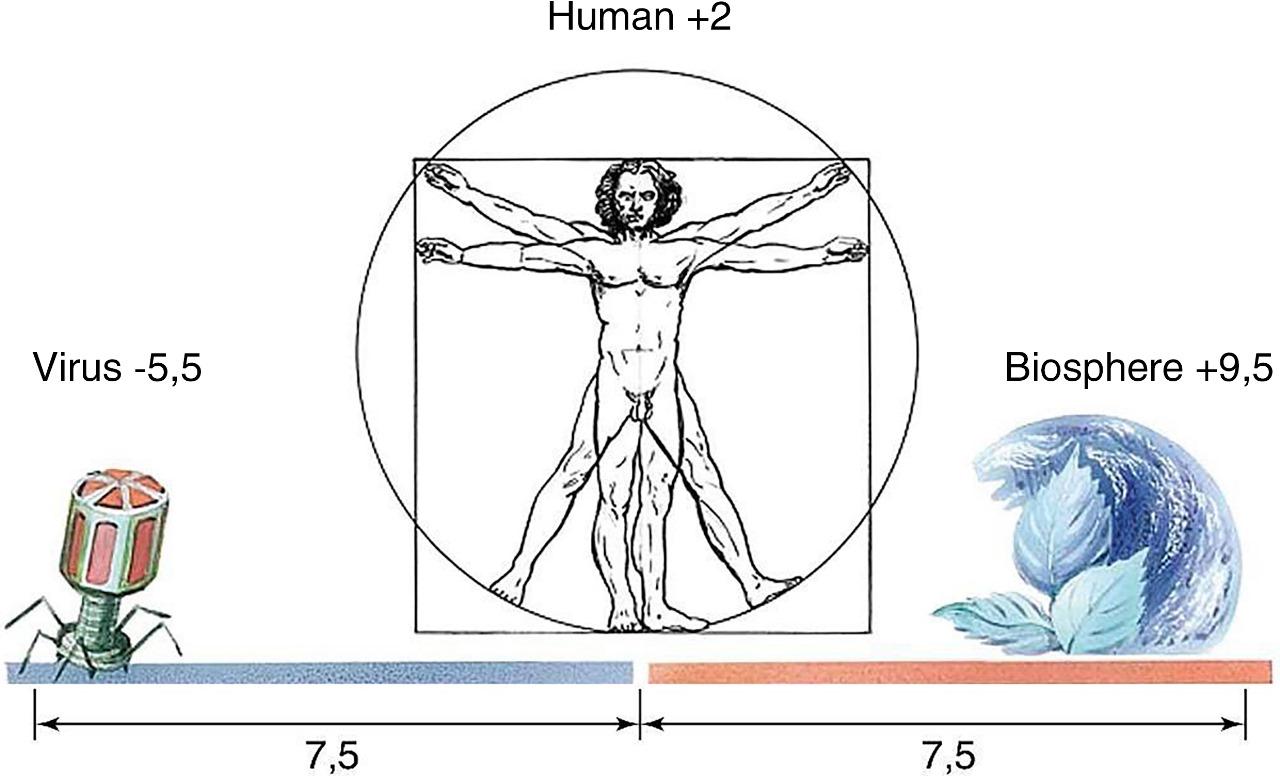
Fig. 14. Man is as many times larger than the smallest particle of life - a virus - as he is smaller than the entire Biosphere.
These results, obtained as a result of accurate mathematical calculations, complement religious and esoteric views about the place of life and man in it in the Universe. It becomes quite obvious that science, which is extremely cautious about such religious and esoteric views, thanks to the discovery and study of the properties of a dimension new for mankind (but basic for the Universe) comes to the same conclusions about the place of man in our world.